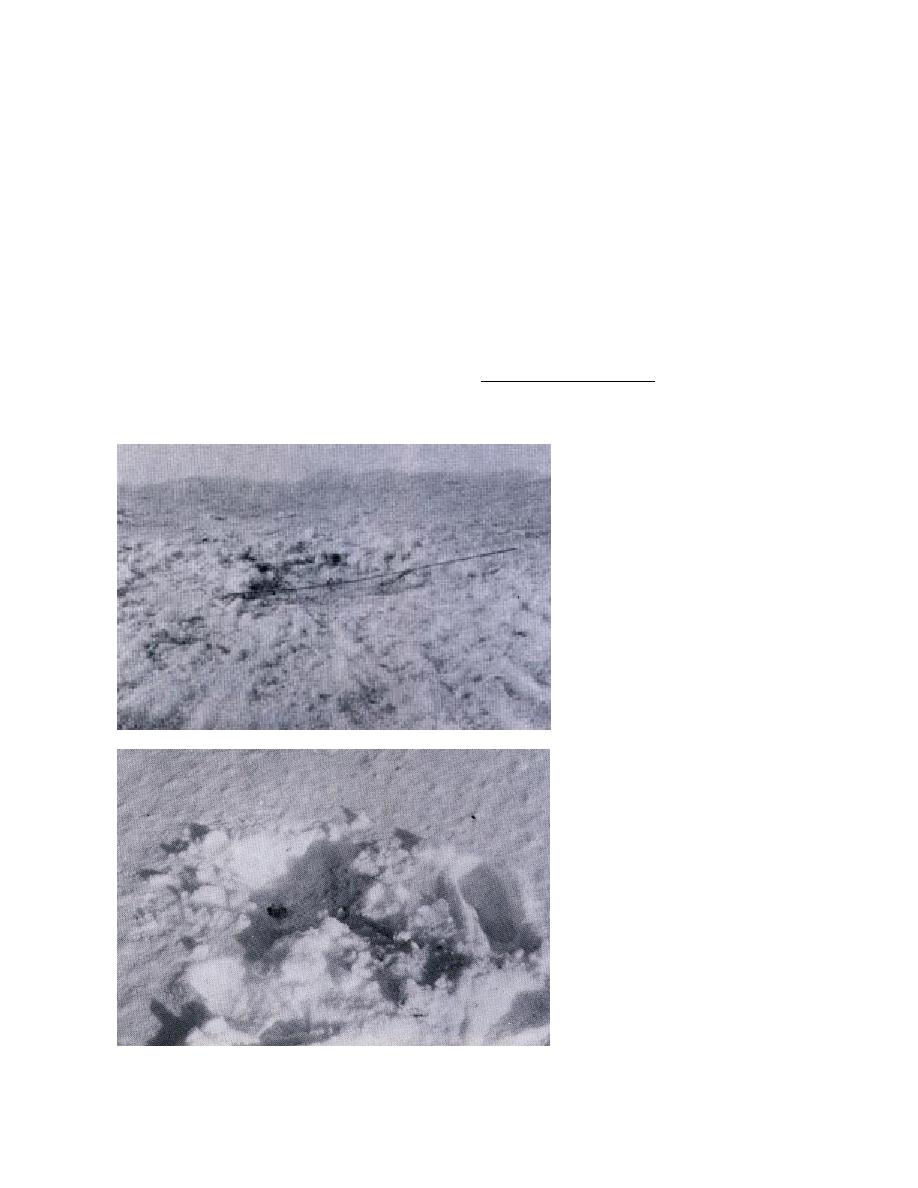
60-mm mortar test firing
Explosive residue
Only point-detonating 60-mm mortar projec-
Snow around craters formed by 105-mm howit-
zer and 81-mm mortar projectiles was sampled
tiles were fired for the test. Craters produced by
and tested for the high-explosive components TNT
the 60-mm projectiles (Table 3, no. 15) were smaller
and RDX. Darkened, ash-covered snow surround-
than those produced by either the 105-mm howit-
zer or 81-mm mortar projectiles, averaging 1.83
ing the crater was collected in a 500-mL I-Chem
glass sample jar. The samples were returned to the
1.70 m in diameter. This gives a mean apparent
laboratory and analyzed for HE components by
radius of 0.88 m.
high-performance liquid chromatography. No ex-
The craters were very shallow, averaging 19 cm,
plosive components were detected, indicating that
essentially the depth of the snow cover in this part
they were completely consumed in the explosions
of the impact area. The snow was blown out by the
of the projectiles.*
explosion, and the underlying ice sheet remained
intact (Fig. 12). There was usually a small dimple in
January 1992 105-mm howitzer firing
the ice at the center of the crater where parts of the
Six craters formed in the ice sheet covering the
fuse of the projectile were sometimes found. One
shallow ponds along the eastern edge of the im-
60-mm projectile was a dud. The projectile appeared
to penetrate into the ice (Fig. 13), with only the tail
fins visible (again after careful digging of the snow
* Personal communication with Marianne Walsh, CRREL,
around the projectile by the EOD escort).
1991.
Figure 12. Crater formed by a 60-mm
mortar projectile.
Figure 13. Dud 60-mm projectile.
10



 Previous Page
Previous Page
